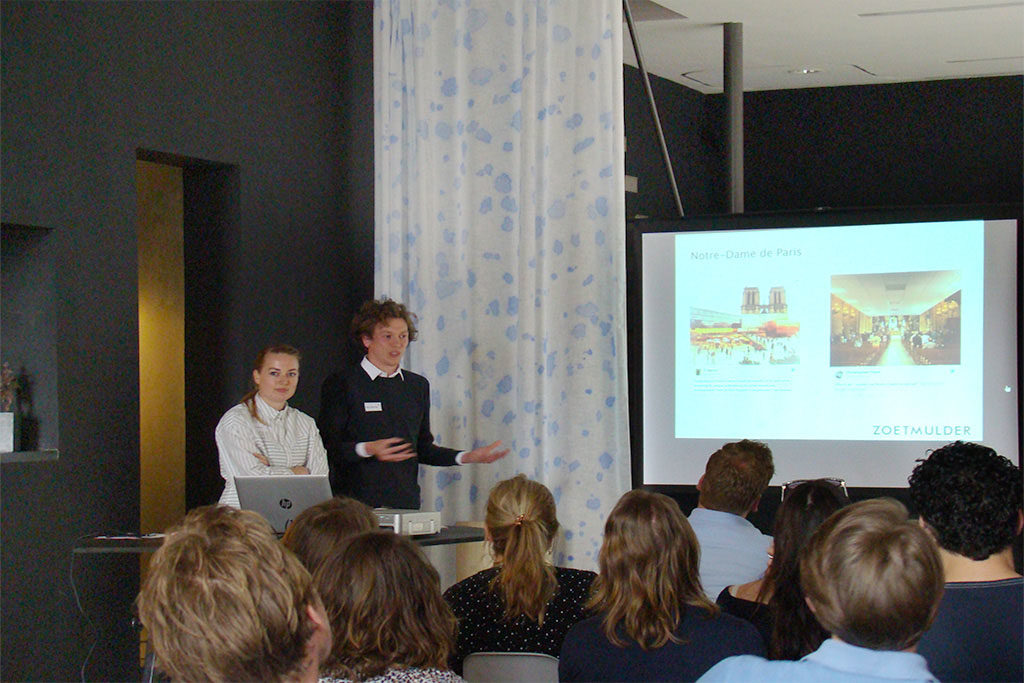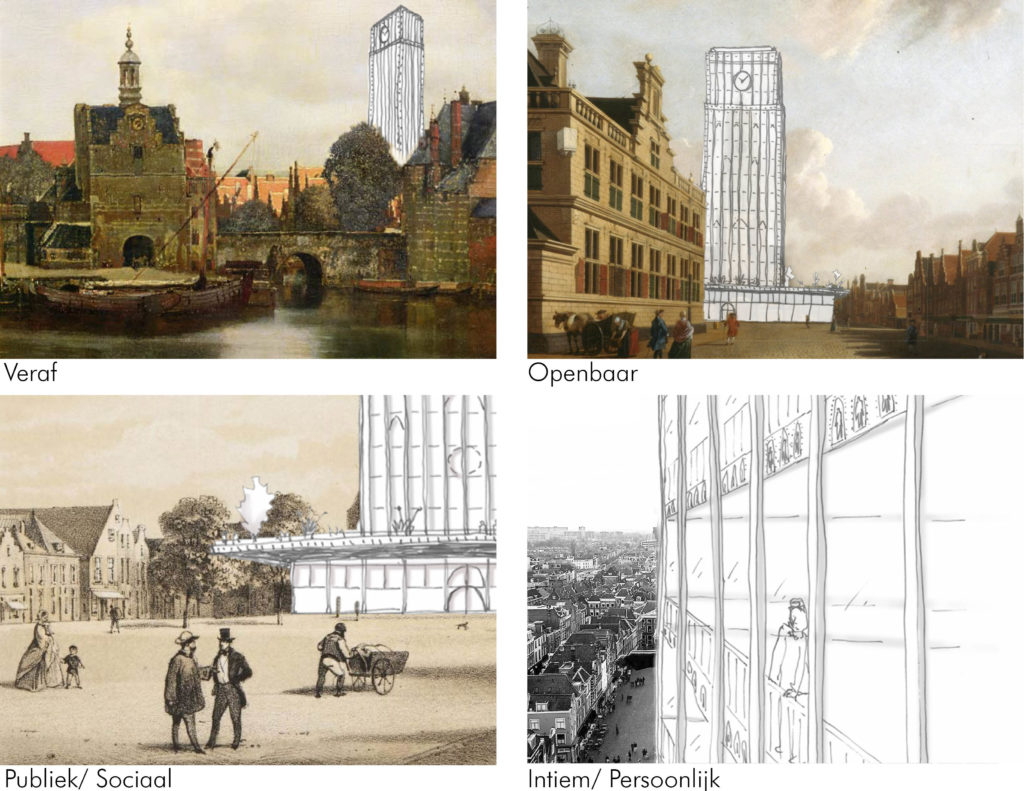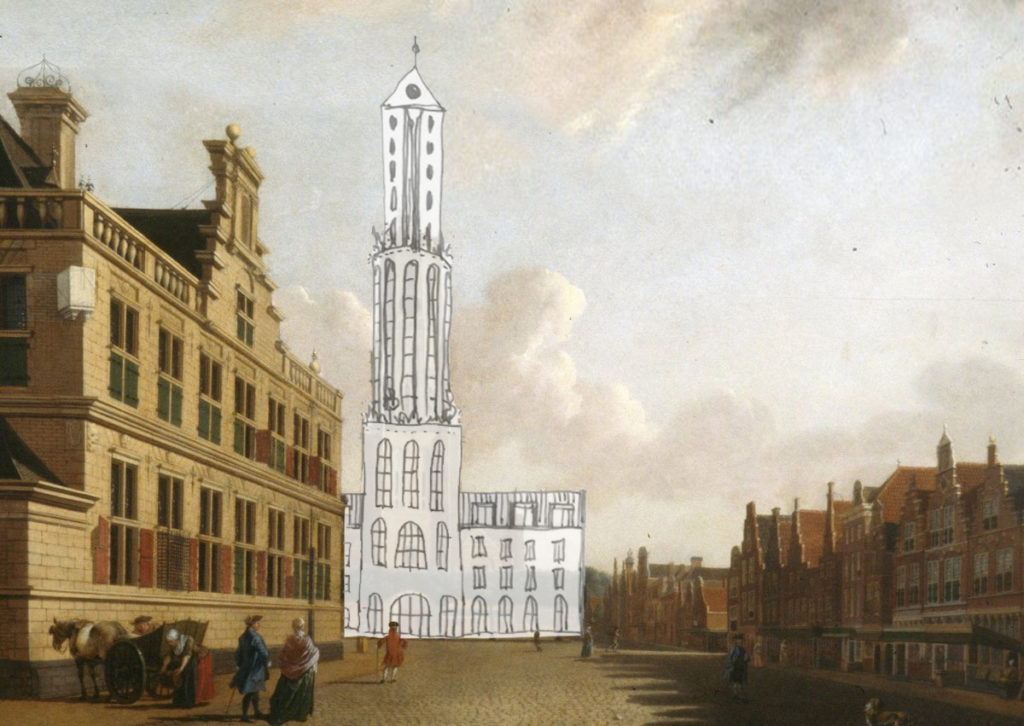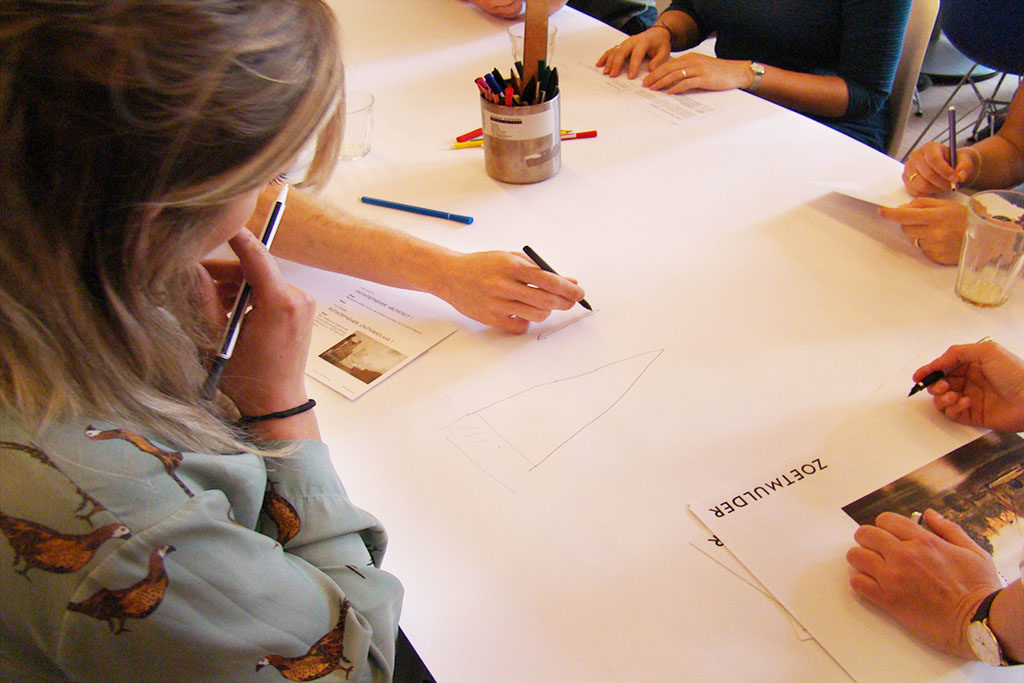We applied our research into sensory experience and scaled areas in a workshop on environmental quality.
By invitation of Network Young Living Environment and JongFRK, ZOETMULDER gave a workshop on environmental quality to young construction professionals, civil servants, spatial consultants and urban planners last April. Based on the vision of ZOETMULDER and our research into scale areas, we have contributed to the central research question: “How do we organize environmental quality in the new environmental law?”
The case
The workshop consists of a design game where a case is approached from different scales. The boundary conditions for environmental quality are determined in a group for the case. We came up with an exciting case for the design game; the disappearance of the church tower of the Nieuwe Kerk in Delft. With what could it be replaced? And how can the quality of this be tested in the new environmental law?
Notre-Dame
The case suddenly changed from a fictional to a relevant assignment, due to the tragic fire in Notre Dame. Something that adds strength and relevance to the workshop.
“Niet lullen, maar schetsen”
The workshop’s motto is: “Niet lullen, maar schetsen” meaning: no time for chitchat, just sketching! In a game-like setting, participants are encouraged to think creatively. For this, we have created a number of frameworks in which “playing” takes place. Rule one: You can only talk if something has just been sketched or is being sketched. This creates a lively discussion about environmental quality that is immediately visualized.
Scale areas
The participants will be included in several rounds; these rounds are the same as the scales: from afar, public, social and intimate / personal. By focusing the discussion on environmental quality on a certain scale area, thinking about experience and quality is stimulated. In this way we work together towards one goal; the best environmental quality for this place in the city.
There were very positive responses on working from scaled areas. It became so clear that some interests were not relevant to certain interventions and others were. It was also striking to see that a conversation forms around the sketch. Curious about the other results? Read the full report here.





